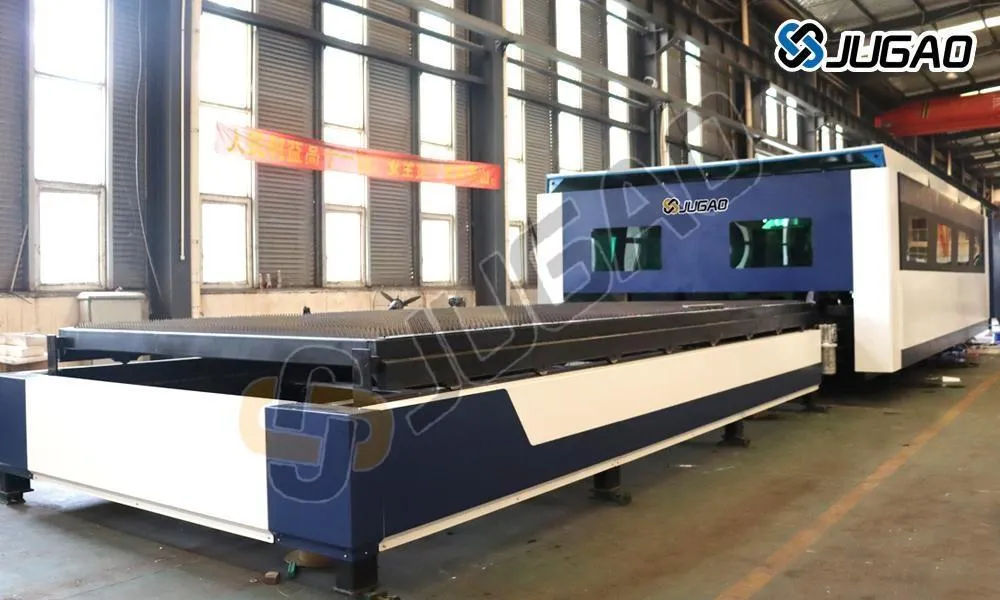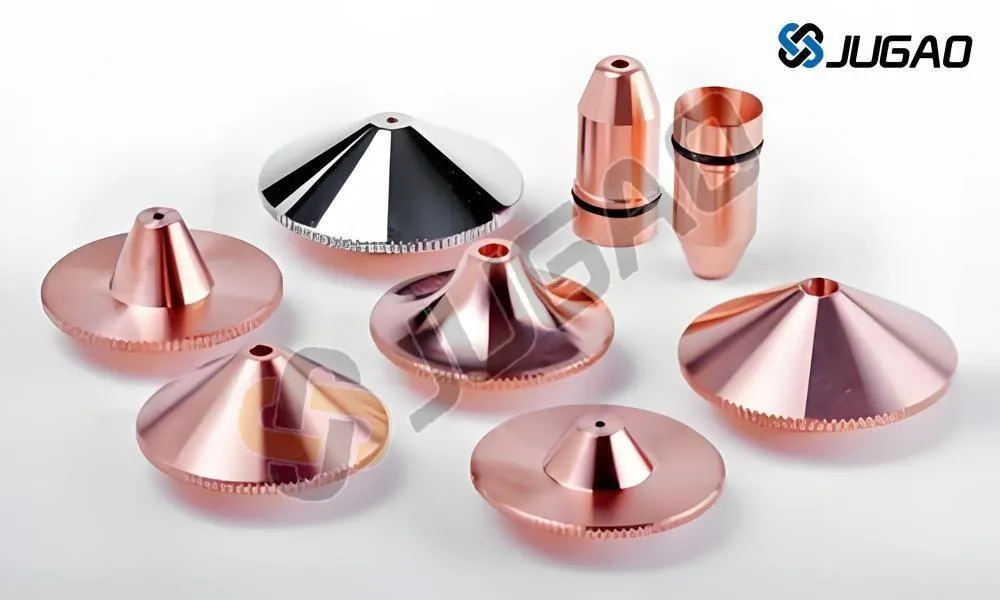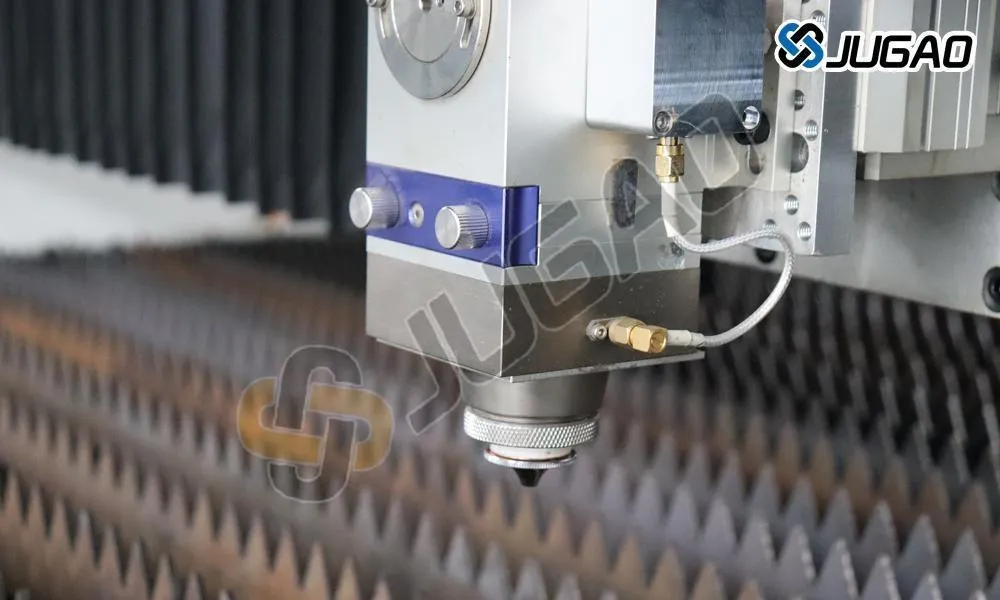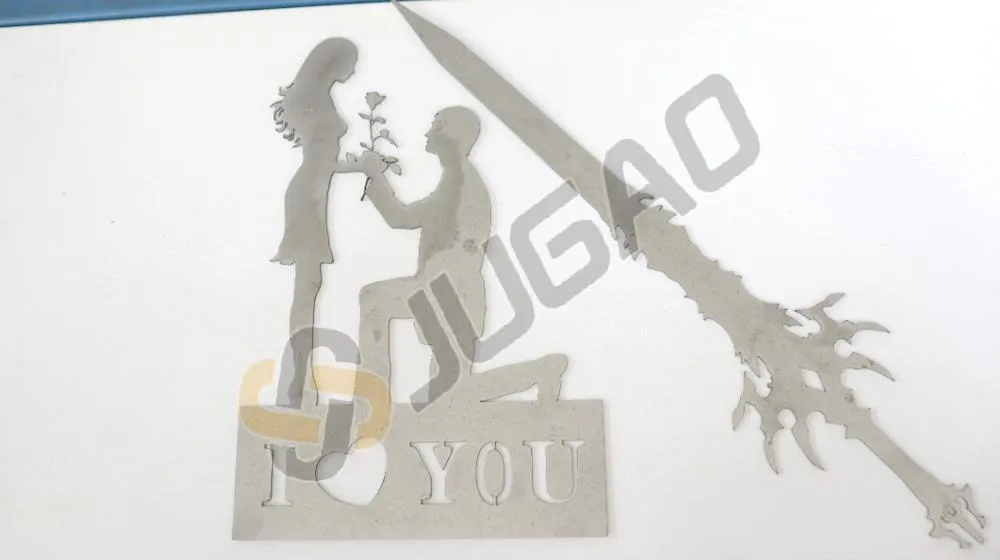-
tel:
+86-13222111178 -
email:
info@ntjugao.com
Technical Analysis: Limitations of Large-Format Laser Cutting Systems
Technical Analysis: Limitations of Large-Format Laser Cutting Systems
Jul 22, 2025
1. Introduction
While large-format laser cutting machines offer unmatched productivity for industrial-scale manufacturing, their implementation presents several technical and operational challenges. This document examines the key limitations of these systems, providing insights for potential adopters to make informed decisions.

2. Primary Limitations
2.1 Capital and Operational Costs
l High Initial Investment:
Industrial-scale laser systems (4kW+) typically range from $500,000 to $2M, excluding ancillary equipment.
l Energy Consumption:
Power requirements exceed 50kVA, with hourly energy costs 3-5× higher than mid-range machines.
l Maintenance Expenses:
Annual maintenance contracts average 10-15% of machine cost due to complex optics and motion systems.
2.2 Space and Infrastructure Requirements
l Footprint Challenges:
Minimum 10m × 5m floor space needed, plus 3m clearance for material handling.
l Structural Modifications:
Often requires reinforced flooring (>5kN/m² load capacity) and vibration isolation foundations.
l Utility Demands:
High-pressure gas supply (20bar+), 3-phase power, and industrial cooling systems (30kW+ chillers).
2.3 Material Processing Constraints
|
Material Type |
Thickness Limit |
Quality Concerns |
|
Mild Steel |
≤50mm |
Dross accumulation >25mm |
|
Aluminum |
≤30mm |
Edge roughness increases >15mm |
|
Stainless |
≤40mm |
Heat distortion in thin sections |
2.4 Operational Complexities
l Long Setup Times:
Calibration for thick materials may require 2-4 hours (vs. <1hr for mid-size machines).
l Skilled Labor Dependency:
Requires L3-certified operators with 500+ hours of training.
l Cutting Speed Tradeoffs:
20mm steel cuts at 0.8m/min (vs. 6m/min on 3kW machines for 3mm sheets).
3. Technical Challenges
3.1 Beam Quality Degradation
l Focus Depth Limitations:
Beam divergence increases 30% when processing >25mm materials, reducing edge quality.
l Nozzle Wear:
High-pressure gas flows (≥2MPa) accelerate nozzle erosion, requiring replacement every 80-120 cutting hours.

3.2 Thermal Management Issues
l Heat Accumulation:
Continuous operation raises chassis temperature by 15-20°C/hour, demanding active cooling.
l Optical Component Stress:
Lens thermal shift causes focal length variations up to ±0.5mm during extended runs.
3.3 Precision Limitations
l Positional Accuracy:
±0.1mm tolerance across 10m beds (vs. ±0.02mm for 2m machines).

l Corner Quality:
Angular error exceeds 0.5° when cutting at >15m/min due to gantry inertia.
4. Productivity Tradeoffs
4.1 Throughput Realities
l Nesting Efficiency Loss:
Large sheets (4m×2m) average only 75-85% material utilization vs. 90%+ on smaller formats.
l Piercing Delays:
25mm steel requires 8-12 second pierce times, reducing net cutting time.
4.2 Maintenance Downtime
|
Component |
MTBF* |
Replacement Time |
|
Laser Source |
8,000hrs |
16-24hrs |
|
X-Axis Guide |
15,000km |
8hrs |
|
Cutting Head |
6,000hrs |
4hrs |
*Mean Time Between Failures
5. Mitigation Strategies
5.1 Cost Optimization
l Implement predictive maintenance using vibration sensors
l Adopt power modulation for thin/thick material transitions
l Utilize off-peak energy pricing schedules
5.2 Quality Control
l Deploy real-time beam profiling systems
l Implement automated nozzle inspection (AI vision)
l Use adaptive cutting algorithms for thickness variations
5.3 Operational Improvements
l Train cross-functional maintenance teams
l Standardize tooling across multiple machines
l Implement palletization systems to reduce setup times
6. Conclusion
Large-format laser cutters deliver unparalleled production capacity but require careful evaluation of:
l Total cost of ownership (TCO) over 5-year period
l Facility readiness assessments
l ROI calculations based on actual throughput needs

Recommendation: Conduct a 3-month trial period with equipment vendors to validate performance claims before capital commitment.
Recent Posts

October 26, 2016
The Most Successful Engineering Contractor
Nov 05, 2025
How to choose the best plate rolling machine?
Oct 29, 2025
Key Configuration Steps for the DELEM DA-66T Tool











